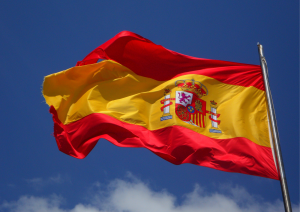Flamenco is one of the most iconic artistic expressions of Spain, especially from the region of Andalusia. This art form, which combines singing, dancing, and guitar, has been recognized as Intangible Cultural Heritage of Humanity by UNESCO since 2010. But where does it come from? MaestroMío will explain it to you clearly and simply!
Influences and origins of flamenco
Flamenco emerged in Andalusia between the 15th and 18th centuries, as a result of the blending of various cultures that coexisted in the region:
- Muslims and Sephardic Jews: During the Al-Andalus period (711–1492), Arabic and Jewish music introduced melodic scales and oriental rhythms that influenced flamenco singing.
- Christians and Castilians: After the Reconquista, the popular songs of Christian communities merged with the existing musical styles of Andalusia.
- The Roma (Gypsy) people: Arriving in Spain in the 15th century, the Roma played a key role in flamenco’s evolution, bringing their unique style, emotion, and way of interpreting song and dance.
The combination of these influences gave rise to a unique musical genre that expresses the deepest human emotions: joy, sorrow, love, and heartbreak.
The evolution of flamenco
Flamenco has gone through several stages to become the art we know today:
- 18th Century: The birth of flamenco singing
The first flamenco styles emerged during family gatherings and in Andalusian taverns. They were passed down orally and featured highly personal interpretations. - 19th Century: The golden age and the singing cafés
In the 19th century, flamenco gained popularity with the rise of cafés cantantes—venues that offered live performances. During this period, the guitar took on a more prominent role, and dance became an essential element. - 20th Century: Professionalization and expansion
Flamenco grew in popularity, and artists like Camarón de la Isla, Paco de Lucía, and Lola Flores brought it to international stages.
In the 1970s and ’80s, flamenco fusion emerged, blending flamenco with jazz, rock, and other musical styles, thanks to artists such as Enrique Morente and Ketama. - 21st Century: Global recognition
Today, flamenco is celebrated worldwide and continues to evolve with new generations of artists who modernize the genre without losing its essence.
The main palos of flamenco
Flamenco is made up of different palos—the various styles or rhythms. Some of the most well-known include:
- Soleá: Deep and solemn singing.
- Alegrías: Festive and upbeat rhythm.
- Bulerías: Fast and energetic, ideal for dancing.
- Fandangos: Melancholic and lyrical.
- Seguiriyas: Expresses pain and tragic emotion.
Flamenco is the result of centuries of history and cultural fusion in Andalusia. Its origins lie in the mix of Arab, Jewish, Christian, and Roma influences, which shaped this passionate and universal art form.
Today, flamenco remains alive, evolving, and moving listeners—whether in a tablao, a flamenco club (peña), or on the great stages of the world. 💃🎶🔥






